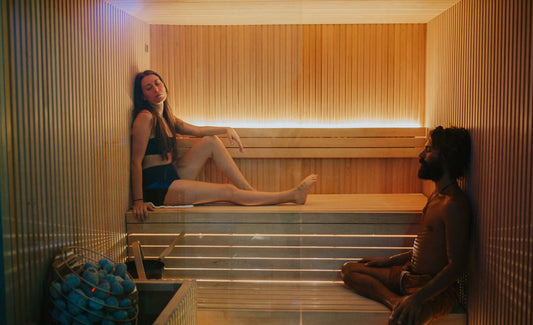In American culture, clothing is more than just a necessity; it reflects personal style, social status, and often, the occasion. American attire varies widely based on regional differences, cultural influences, and individual preferences. This guide explores the common types of clothing Americans wear, focusing on both formal and casual attire, with considerations for various settings and occasions.
Understanding American Clothing Styles
American clothing styles are influenced by a mix of traditions, modern trends, and cultural diversity. The range of attire reflects the country’s emphasis on both comfort and expression. Here’s a closer look at what Americans typically wear in various contexts.
Formal Attire in America
Men's Formal Attire
Suits
- Color: Neutral colors such as navy, charcoal, or black are standard. These colors convey professionalism and are versatile for various formal occasions.
- Fit: Suits should be well-fitted, with options for single-breasted jackets, typically featuring two or three buttons. Proper fit ensures a sharp appearance and comfort.
- Fabric: Wool or wool blends are preferred for their durability and refined appearance. These fabrics are suitable for various seasons and provide a polished look.
Shirts and Ties
- Shirts: Crisp, well-pressed shirts in white or light blue are staples. They offer a clean and professional look.
- Cuffs: French cuffs are an option for an elegant touch, often paired with cufflinks for added sophistication.
- Ties: Silk ties in solid colors, stripes, or subtle patterns like polka dots are common. They complement the suit and add a touch of personality.
Footwear
- Shoes: Oxfords or Derby shoes in black or dark brown are the go-to choices for formal settings. They should be polished and well-maintained.
- Socks: Should match the trousers and be long enough to avoid showing skin when sitting.
Accessories
- Belt: A leather belt that matches the shoe color is essential for a cohesive look.
- Wristwatch: Conservative and professional, enhancing the overall attire without being overly flashy.
- Cufflinks: Simple and understated, if worn.
Women's Formal Attire
Suits and Separates
- Suit Types: Pantsuits or skirt suits are standard for formal settings. Both options should be tailored for a polished look.
- Colors: Neutral colors like black, navy, or grey are common. Subtle pinstripes or checks can add a touch of variety while maintaining professionalism.
- Skirt Length: Knee-length or slightly longer skirts are appropriate, avoiding overly short or tight styles.
Blouses and Tops
- Material: High-quality fabrics such as silk or cotton are preferred for blouses. They offer a refined appearance and comfort.
- Colors and Patterns: Solid colors or subtle patterns (e.g., pinstripes) are suitable. Avoid low necklines or sheer materials to maintain modesty and professionalism.
Accessories
- Jewelry: Simple jewelry like a classic necklace or stud earrings complements formal attire without being distracting.
- Belts: Should match the suit or shoes if worn.
- Handbags: Structured, neutral-colored handbags are preferred for a sophisticated look.
- Shoes: Closed-toe shoes with a moderate heel height (2-3 inches) in complementary colors complete the formal outfit.
Business Casual Attire in America
Men's Business Casual Attire
Slacks and Trousers
- Styles: Tailored slacks or chinos offer a more relaxed but still professional appearance.
- Colors: Neutral shades like khaki, navy, or grey are typical choices.
- Fit: Slacks should be comfortable yet tailored, avoiding overly loose or tight fits.
Shirts and Sweaters
- Shirts: Collared shirts such as button-down oxfords or polo shirts are common. They provide a smart yet relaxed look.
- Layering: Sweaters or sweater vests can add an extra layer of professionalism and style.
Footwear
- Shoes: Loafers, brogues, or monk strap shoes in leather are suitable. They offer a balance between comfort and style.
- Socks: More color or pattern can be introduced, but they should remain tasteful and not overly flashy.
Accessories
- Belt: A leather belt matching the shoes maintains a cohesive look.
- Watch: A more casual watch is acceptable, provided it remains professional.
Women's Business Casual Attire
Skirts and Trousers
- Options: Trousers, skirts, or dresses provide various choices for business casual attire.
- Styles: Pencil skirts, A-line skirts, or tailored trousers are appropriate. They should be comfortable and professional.
- Colors: Neutral or muted tones are preferred for a cohesive look.
- Dress Length: Knee-length or longer dresses with modest necklines are suitable.
Blouses and Sweaters
- Tops: Blouses, knit tops, or collared shirts are common choices. They offer a relaxed yet professional appearance.
- Colors and Patterns: More variety in colors and patterns is acceptable compared to formal settings, but avoid bold or distracting designs.
- Layering: Cardigans or blazers can add professionalism and allow for personal style expression.
Shoes and Accessories
- Footwear: Loafers, flats, or low heels are suitable. Open-toe options may be acceptable depending on the office environment.
- Condition: Shoes should be well-maintained and polished.
- Accessories: Scarves, jewelry, and handbags can reflect personal style while maintaining a professional balance.
Special Considerations and Tips
Client Meetings and Presentations
Dress Codes
- Adherence: Follow the client’s dress code while maintaining professional standards. This shows respect and alignment with client expectations.
- Industry Research: Understanding the client’s industry attire helps ensure appropriateness and comfort.
Impressions
- Professionalism: Dressing appropriately demonstrates respect for the client and shows professionalism.
- Detail-Oriented: Attire reflects attention to detail and commitment, important in client interactions.
- Avoid Distractions: Choose clothing and accessories that enhance rather than detract from professional discussions.
Office Culture and Dress Codes
Flexibility
- Variation: Dress codes can differ between firms, departments, or teams. It’s important to adapt to the specific environment.
- Casual Days: Many firms have designated casual days, such as “casual Fridays,” where attire can be more relaxed.
Corporate Policies
- Guidelines: Familiarize yourself with your firm’s dress code policy. Understanding the guidelines ensures compliance and appropriateness.
- Compliance: Adhere to policies regarding clothing, footwear, accessories, and grooming.
- Ambiguity: Navigate any dress code ambiguities by observing colleagues and seeking clarification when needed.
Conclusion
In America, clothing serves as a reflection of individual style, professional status, and cultural influences. Whether for formal or business casual settings, understanding the appropriate attire is crucial for making a positive impression and maintaining professionalism. By adhering to dress codes and adapting to various contexts, Americans can balance personal expression with societal expectations, enhancing their overall professional and social image.
Thoughtful clothing choices not only contribute to a positive professional image but also foster a cohesive and respectful workplace environment. As American fashion continues to evolve, staying informed about attire expectations will help individuals present themselves effectively and confidently in various settings.


